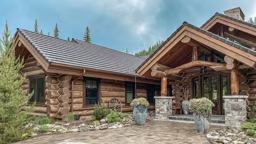
It’s a question almost as long-standing as log homes themselves: Which wood species is “best.” But the truth is, there isn’t one that tops the rest. Across the globe, log homes of varying types of wood have been standing for centuries, and with proper care and modern wood preservatives, they all can successfully fight common enemies such as decay, insects and moisture. But there are a few factors to narrow the field.
Start with a look that appeals to you.
Ask yourself if you like the look of large knots and prominent grain (typically found in pine) or prefer few knots and straight, inconspicuous grain (most cedar). Maybe you want a hard, dense wood species (oak) or something a little softer (spruce or pine).
The importance of geography.
Though most manufacturers can ship their materials throughout the United States and, in many cases, internationally, they tend to specialize in tree species near their production facilities. For example, in the Northeast, white cedar and white pine are prevalent; in the Southeast, yellow pine dominates; while out West, lodgepole pine, Douglas fir and western red cedar take the prize. If a wood species is indigenous to an area, the odds of it making an exceptional log home there are good, too; however today’s outstanding stains and sealants mean that species can withstand the elements almost anywhere.
Where to start?
Focus on finding a company that produces homes you like, then ask their representative what kind of wood species they’d recommend for your location. They’ll steer you right.








_11868_2024-09-17_08-44-256x288.avif)


